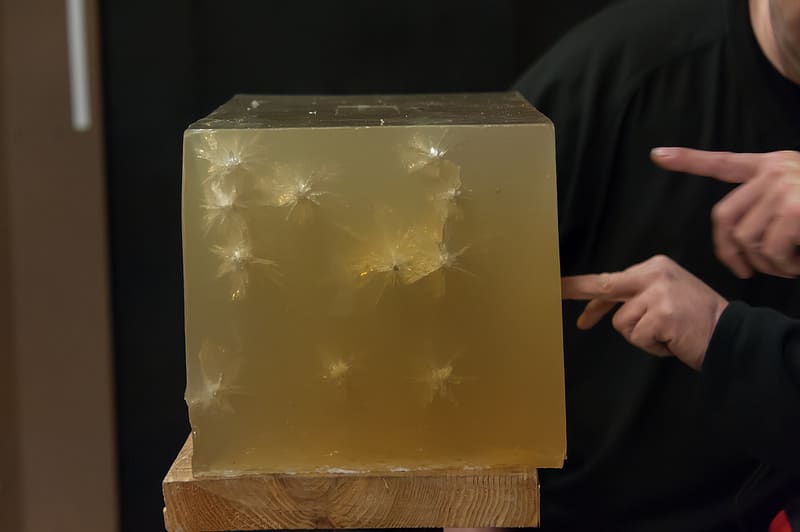How to Make Cheap and Simple DIY Ballistics Gel
OutdoorHub Social 04.27.16

Whether it was thanks to an episode of MythBusters or Forensic Files, we’ve all taken in some gun related television programming at one time or another. Whether you found yourself riveted by the firearm experiments recreated to debunk myths or forensic evidence established to make the case, the bottom line is that it is interesting to see for yourself the way guns operate as do the projectiles emitted from them.
Since the average person is unlikely to be extended an invite to see these recreations for themselves, we can either choose to be bummed out or instead simply make our own fun. If you’ve ever wanted to see for yourself how your personal firearms performed once the trigger is pulled, ballistics gel is one way to get those answers. Better yet, you can do it yourself by making some right there at home.
To get started on your own ballistics gel, a trip to the store is in order. First, you need to find a pan of some kind in which to put your gel. It should be in a shape that will yield a block that is large enough for the purpose you have in mind, such as a metal bread loaf pan. Non-stick coating may be useful if you wish to go that route, but cooking spray to aid in releasing the mold from the pan is a worthwhile investment as well. Next, you will need to calculate the capacity of the pan you’ve chosen. An easy way to do this is to fill it with water, measuring the amount you intend to place in it. For every 3/4 of a cup of water, 1 ounce of gelatin is required. Once you’ve arrived at a total and performed the necessary calculations, purchase some unflavored gelatin to meet your needs (a widely seen brand of which is Knox). This gelatin is going to be a mostly transparent, yellowish color when finished. Lastly, you will need hot water in the amount you previously determined your pan will hold.
Carefully combine these ingredients into your loaf pan by pouring the water in first, then adding gelatin. Mix thoroughly, taking care not to get burned in the process, stirring until there are no air bubbles remaining as these will compromise the structural integrity and usefulness of your gel. After stirring is complete, relocate your pan into the fridge for cooling for a minimum of four hours although overnight is acceptable as well.
After that allotted time has passed, remove the pan from the fridge. Your next step is to melt down the gelatin mixture to a liquid form once again to remove any remaining air that could be trapped within. The easiest way to do this is by using a double boiler method and suspending the loaf pan over another pot of boiling water until it liquefies once again. Take care not to allow your gel to begin to boil, however, or this will trap more of the air bubbles you are trying to remove. Upon ensuring it has melted, remove your gel from the heat source and place it in the fridge once again for at least four hours or overnight if time and space allows. If necessary, this process can be repeated.
At this point, your DIY ballistic gel is ready for use! It can be removed from the fridge but be sure to store it in a cool location until the time comes to use it. When you take it out of the pan, do so on a flat, uniform surface so at to avoid breakage. Flipping the pan over is a good way to go about this, but jamming your fingers into free the gel may result in pieces breaking free.
Unfortunately, when it comes to do-it-yourself ballistics gel, there is no quick way to do it. You are looked at investing a little bit of time into the process, so planning ahead is necessary. Although it would be great if this was something we could whip up in 20 minutes or less, getting a solid, useful block of ballistics gel is going to require a block of your time in exchange.
Although the ballistics gel you make at home in your kitchen isn’t likely to be meet the requirements necessary to hold up in a court of law, it can make for some fun and interesting experiments on the range. If you want to see for yourself the impact of the bullets you fire, DIY ballistics gel is a cheap and easy way to observe what that occurs when a bullet hits its mark.

